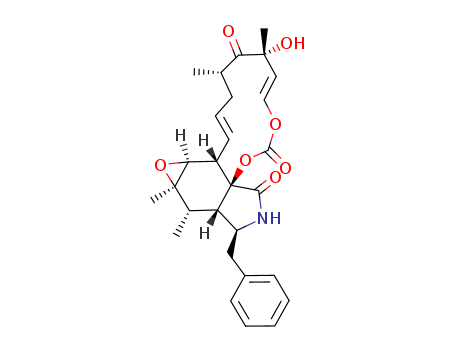Suppliers and Price of CID 2920
- Business phase:
- The product has achieved commercial mass production*data from LookChem market partment
- Manufacturers and distributors:
-
- Manufacture/Brand
- Chemicals and raw materials
- Packaging
- price
- Usbiological
- Cytochalasin E
- 1mg
- $ 339.00
- TRC
- CytochalasinE
- 1mg
- $ 415.00
- Sigma-Aldrich
- Cytochalasin E from Aspergillus clavatus
- 10mg
- $ 1560.00
- Sigma-Aldrich
- Cytochalasin E from Aspergillus clavatus
- 5mg
- $ 1020.00
- Sigma-Aldrich
- Cytochalasin E from Aspergillus clavatus
- 1mg
- $ 259.00
- Frontier Specialty Chemicals
- CytochalasinE,99%,fromAspergillusclavatus
- 1mg
- $ 121.00
- Cayman Chemical
- Cytochalasin E ≥98%
- 5mg
- $ 196.00
- Cayman Chemical
- Cytochalasin E ≥98%
- 1mg
- $ 49.00
- Cayman Chemical
- Cytochalasin E ≥98%
- 10mg
- $ 368.00
- Biosynth Carbosynth
- Cytochalasin E
- 2 mg
- $ 164.00
-
Total 24 raw suppliers



 T,
T,  T+
T+


